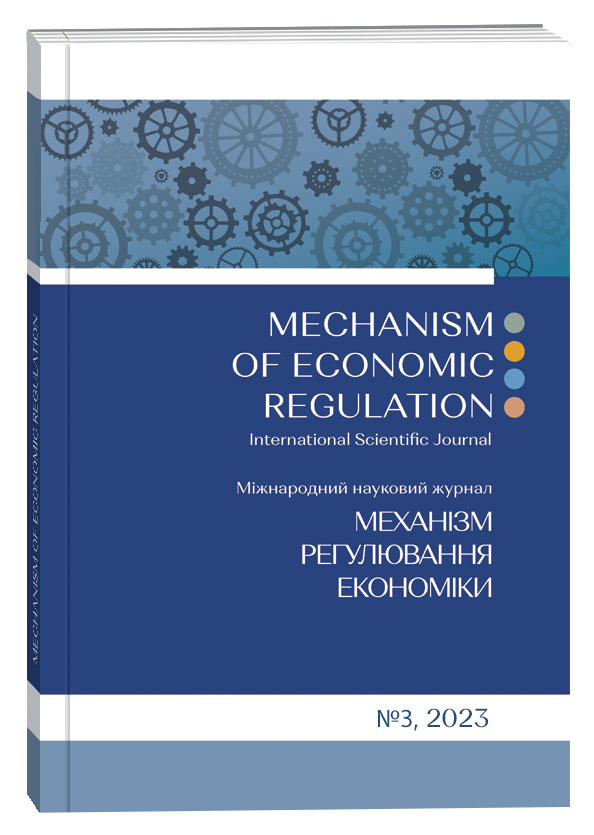PROBLEM AREA DIFFERENCES IN THE CONCEPTS OF CUSTOMER CENTRICITY AND CUSTOMER ORIENTATION
Abstract
In recent years, business literature has shifted its focus from customer focus to customer centricity, which is positioned as a fundamentally new concept, a paradigm of doing business. The purpose of this article is to understand the correlation of these concepts for the correct interpretation of the latter. A review of the scientific literature using the built-in analysis option of SCOPUS.com showed that the main components of this concept (definition, genesis, prerequisites, consequences, differences from other concepts, positives, barriers, etc.) were developed long ago - at the beginning of the 21st century. The To increase the validity and remove bias in the interpretation of the distinctive features of the concept, a conceptual computer analysis of 2 arrays of information was carried out: titles and abstracts of 270 scientific publications published in the SCOPUS scientometric database with the keyword "customer focus" and 460 scientific publications with the keyword "customer centricity". The sample comprised 5,856 publications with one of the possible terms describing the attitude towards the client (orientation, focus, focus) in the title or abstract. The text arrays were processed using WordStat 2023.0.1, a special text analysis module developed by Provalis Research (Canada). The computer analysis conducted with the help of the WordStat software allowed to establish a list of words that are most often found in scientific periodicals (articles and abstracts) included in the relevant sample; a list of phrases that are most often found in scientific periodicals (articles and abstracts) included in the relevant sample; leading topics that are considered within the formed samples (6 topics that characterise the problem field of customer focus research and 10 leading topics of publications on customer centricity). The objective data obtained proves that while at the level of words there is an identity of concepts, at the level of phrases and top topics there is a clear shift in focus from marketing issues (customer focus, customer satisfaction, customer relations, customer requirements, customer-centric service, customer-centric experience, customer relationship management, etc.). In addition to the traditional aspects (customer centricity, customer relations), the leading aspects described in the literature on customer centricity are making the right decisions in all links of the supply chain, the problems of developing appropriate information systems and technologies, creating and using social networks, developing tools for empathy with the customer, and predicting his or her behaviour - as the basis for real customer centricity. It was also found that customer centricity is recognised as a priority for the development of products and services in such new areas as energy saving and electric vehicles. Thus, the conceptual computer analysis conducted with the help of the WordStat software product allows to interpret customer centricity as a qualitatively new level of development of the customer orientation concept, which implies the extension of the concept's scope to all components and processes of the business model, the acquisition by organisations of a new status of "customer-oriented"; recognition of the customer as the most important, central figure and driving force of business development.
References
Ranjay, G. (2010). Reorganize for Resilience: Putting Customers at the Center of Your Business Harvard Business Press (January 19, 2010). 288 p.
Gupta, S., & Zeithaml, V. (2006). Customer Metrics and Their Impact on Financial Performance. Marketing Science, 25, 718–739. DOI: https://doi.org/10.1287/mksc.1060.0221
Wealth Management Digitalization changes client advisory more than ever before (2016). Available at: https://www2.deloitte.com/content/dam/Deloitte/de/Documents/WM%20Digitalisierung.pdf-
Mastering Adaptive Customer Engagementshttps. (2014). Available at: https://www.cmocouncil.org/thought-leadership/reports/mastering-adaptive-customer-engagements
The one who is in the centre of the world pays. Available at: https://carway.info/ru/magazine/issue/2020-04/platit-tot-kto-v-centre-mira
Shah, D., Rust, R.T., Parasuraman, A., Staelin, R., & Day, G.S. (2006). The Path to Customer Centricity. Journal of Service Research, 9(2), 113–124. DOI: https://doi.org/10.1177/1094670506294666
Bonacchi, M., & Perego, P. (2011). Improving profitability with customer-centric strategies: the case of a mobile content provider. Strategic Change, 20(7-8), 253–267. DOI: https://doi.org/10.1002/jsc.899
Moormann, J., Palvölgyi, E.Z. (2013). Customer-Centric Business Modeling: Setting a Research Agenda, in: Proceedings of 2013 IEEE International Conference on Business Informatics, Wien. 173–179. DOI: http://doi.ieeecomputersociety.org/10.1109/CBI.2013.33
Habel J., Kassemeier R., Alavi S., Haaf P., Schmitz C. & Wieseke J. (2020). When do customers perceive customer centricity? The role of a firm’s and salespeople’s customer orientation. Journal of Personal Selling & Sales Management, 40(1), 25–42. DOI: https://doi.org/10.1080/08853134.2019.1631174
Greenacre, M. (1993). Correspondence Analysis in Practice. London : Academic Press.
Stephen, T. (1999). Computer-Assisted Concept Analysis of HCR’s First 25 Years. Hum. Commun. Res., 25, 498–513.
Stephen, T. Differentiating the US. regional communication journals: A computer assisted concept analysis. In Proceedings of the Conference of International Communication Association. Washington, DC, USA, (24–28 May 2001).
Illia, L. (2010). How Business Disciplines Discuss Multiple Identities in Organizations. Corp. Reput. Rev., 12, 327–344.
WordStat. Available at: https://provalisresearch.com/products/content-analysis-software/
Péladeau, N., Davoodi, E. Comparison of Latent Dirichlet Modeling and Factor Analysis for Topic Extraction: A Lesson of History. In Proceedings of the 51st Hawaii International Conference on System Sciences, Waikoloa Village, Hawaii, USA, (2–6 January 2018). 615–623.


